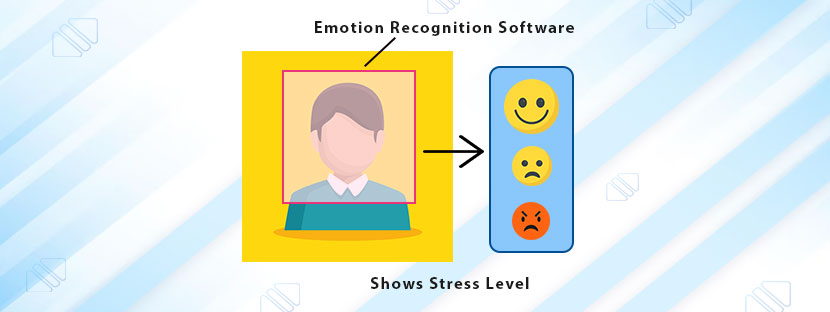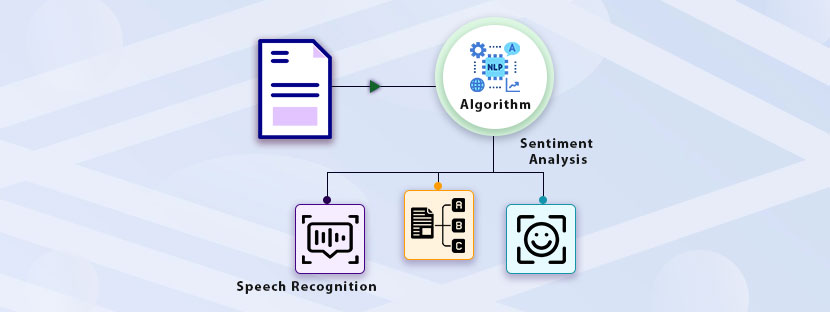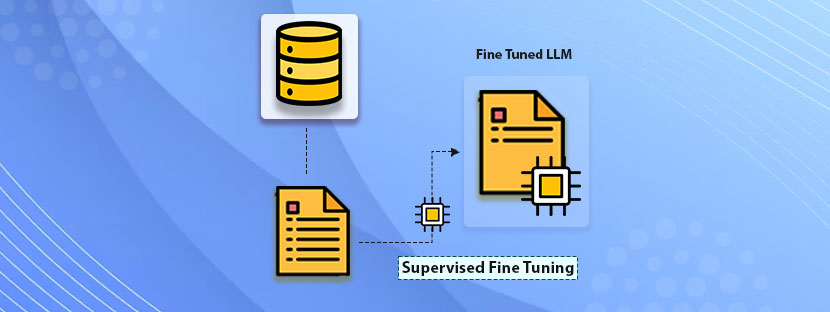Development of automated emotion detection is a hot topic in the field of computer vision AI research.
Usage of emotion recognition software has also increased over the years, and most abruptly, it can be found in the HR role. Most probably, taking the interviews. Many start-ups have already started incorporating this technology into their HR activities.
Now, imagine you’re sitting for a virtual interview, confidently throwing your answers while an AI-built software constantly monitors all your activities. It notes all your micro-expressions and assesses your overall speech delivery.
With the help of this emotion-detecting software, the company where you were given the interview gained deeper insights about you. Using these tools in interviews is gradually getting adopted by top companies. So, we need to know about this technology and the key method behind this technology. Let this blog explain to you everything.
What is Facial Emotion Recognition Software
Built on Artificial Intelligence (AI), emotion detection software is a technology and a machine learning algorithm that interprets facial expressions. It recognizes human emotions or sentiments and tags them appropriately.
At present, emotion recognition AI software can identify 6 basic emotions of human beings. With the standard and optimal use of sentiment analysis, these tools can support the “emotion theory of humans”. It means that the tools can find all 6 basic human emotions, discrete, physiologically distinct, and perfectly measurable. The usability of this software in human resources is high, especially in interview rounds to measure candidates’ emotions.
How Emotion Recognition Software Works
Facial expressions are a very interesting subject to study. In an old proverb, it was often said that the face reveals everything. Emotion analyzing software basically uses ML algorithms to study the human face. Primarily, this software has the ability to understand basic human emotions like;
😊 Happines 😞 Sadness
🤢 Disgust 😤 Anger
😱 Fear 😇 Surprise
With the latest development of AI technology, emotion recognition software helps computers detect human emotions in real time. It can detect emotions from images and videos in a real-world scenario. Therefore, it helps businesses make data-driven decisions faster and accurately. In this case, the HR recruiters can study the facial expression of the candidate more precisely with the help of emotion recognition applications.
Technology Behind Emotion Recognition Software
Like any other AI-based application, training data is the key technology behind the development of human emotion detection software. In other words, accurately labeled image and video data help the ML algorithm to detect human expressions live. The core element behind this technology is the “Neural Network”, which mimics the human brain and helps machines to understand things visually.
In this context, the software examines facial muscle positioning, eye movement, and mouth openings of the candidate during interviews. The entire analysis happens during the interview period and involves notifying the interviewer. Based on the expression and facial sentiments, it also helps the interviewer to frame tailored questions on that situation.
Imagine during the interview, the interviewer asked a challenging question to the candidate. The facial emotion recognition software immediately caught the candidate’s face and detected the sign of nervousness. Once the interviewer gets this, he/she can ask other questions to comfort the candidate. And a vice-versa case is also possible here. However, the software can help the interviewer understand the emotional shift of the candidate throughout the interview.
Using Emotion Recognition Software In Interviews
Nowadays, many organizations have integrated facial expression recognition software into the interview process. It’s hard to escape the process as the software can track every facial emotion of the candidate in a detailed manner. These tools are excellently tracking the emotions of the candidates and providing insightful outcomes to the interviewers. Let’s check which things these tools can detect.
☆ Enthusiasm and Engagement
A genuine smile in an alter position shows that the candidate is showing enthusiastic reactions. This smile helps connect with the audience. Hence, it’s quite crucial for the interviewer to find this pattern in the face if the job role is customer-centric.
☆ Highlighting Stress and Anxiety
What shows a sign of stress, except a raised eyebrow and tightened lips? The software will detect that too. When this sign triggers, as an interviewer, you can make a further move to test the patience and tolerance level of the candidate. You can increase the stress level through your questions and actions at that time.
☆ Testing the Confidence Level
Emotion recognition software can evaluate the level of confidence of the candidates. This emotion is crucial if the company is hiring someone for a leadership role. All the key traits of leadership attitude are getting recognized by the AI in this process. The software can tell the interviewer whether the candidate will be the right fit for the leadership role or not.
Advantages of emotion recognition software as an Interviewer
The job of a human resource recruiter has been made easier with the application of AI in HR roles. Now, the HR person only has to ask the candidate questions, as the AI will assess the facial expression and do the assessment. The application of the AI facial detection tool is applicable to all industries, irrespective of job roles. The following advantages you can gain if you’re using this software for HR roles.
→ Reduction of human bias is possible. No person can favor more to candidate than another. The software evaluates everything.
→ Getting more suitable candidates is easy. Only deserving candidates will get selected and posted.
→ The best part of emotion recognition software is that it provides real-time feedback. Everything that you’ll get will be in real-time. As an HR interviewer, you can also help candidates recognize their strong areas as well as the areas where they can improve.










